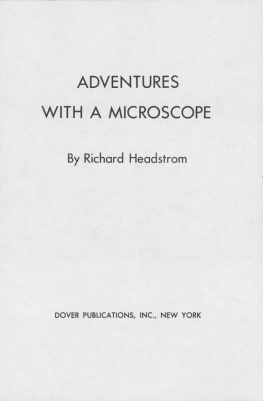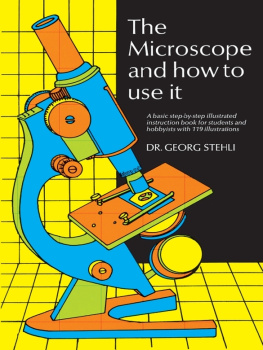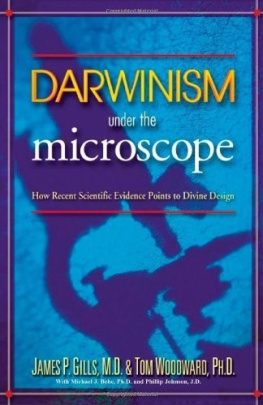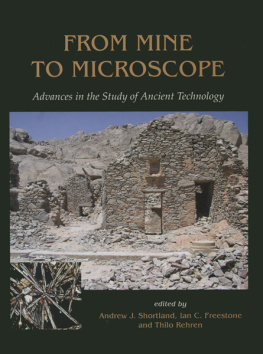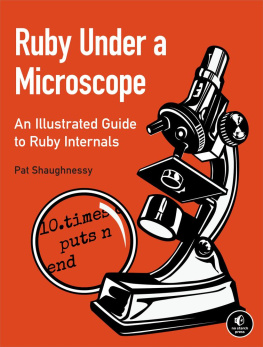Headstrom - Adventures with a Microscope
Here you can read online Headstrom - Adventures with a Microscope full text of the book (entire story) in english for free. Download pdf and epub, get meaning, cover and reviews about this ebook. year: 2014;1950, publisher: Dover Publications, genre: Detective and thriller. Description of the work, (preface) as well as reviews are available. Best literature library LitArk.com created for fans of good reading and offers a wide selection of genres:
Romance novel
Science fiction
Adventure
Detective
Science
History
Home and family
Prose
Art
Politics
Computer
Non-fiction
Religion
Business
Children
Humor
Choose a favorite category and find really read worthwhile books. Enjoy immersion in the world of imagination, feel the emotions of the characters or learn something new for yourself, make an fascinating discovery.
- Book:Adventures with a Microscope
- Author:
- Publisher:Dover Publications
- Genre:
- Year:2014;1950
- Rating:3 / 5
- Favourites:Add to favourites
- Your mark:
- 60
- 1
- 2
- 3
- 4
- 5
Adventures with a Microscope: summary, description and annotation
We offer to read an annotation, description, summary or preface (depends on what the author of the book "Adventures with a Microscope" wrote himself). If you haven't found the necessary information about the book — write in the comments, we will try to find it.
Adventures with a Microscope — read online for free the complete book (whole text) full work
Below is the text of the book, divided by pages. System saving the place of the last page read, allows you to conveniently read the book "Adventures with a Microscope" online for free, without having to search again every time where you left off. Put a bookmark, and you can go to the page where you finished reading at any time.
Font size:
Interval:
Bookmark:
DE RE METALLICA, Georgius Agricola. (0-486-60006-8)
CLOUD PHYSICS: A POPULAR INTRODUCTION TO APPLIED METEOROLOGY, Louis J. Battan. (0-486-42885-0)
THE FERMI SOLUTION: ESSAYS ON SCIENCE, Hans Christian von Baeyer. (0-486-41707-7)
EXPERIMENTS AND OBSERVATIONS ON THE GASTRIC JUICE AND THE PHYSIOLOGY OF DIGESTION, William Beaumont. (0-486-69213-2)
CLOUDS IN A GLASS OF BEER: SIMPLE EXPERIMENTS IN ATMOSPHERIC PHYSICS, Craig F. Bohren. (0-486-41738-7)
EINSTEINS THEORY OF RELATIVITY, Max Born. (0-486-60769-0)
SELECTED LETTERS ON EVOLUTION AND ORIGIN OF SPECIES, Charles Darwin.
(0-486-20479-0) THE NOTEBOOKS OF LEONARDO DA VINCI, Leonardo da Vinci. (Available in
United States only.) (0-486-22572-0, 0-486-22573-9) Two-volume set THE GEOMETRY OF REN DESCARTES, Ren Descartes. (0-486-60068-8)
INVESTIGATIONS ON THE THEORY OF THE BROWNIAN MOVEMENT, Albert Einstein. (0-486-60304-0)
THE PRINCIPLE OF RELATIVITY, Albert Einstein, et al. (0-486-60081-5)
SIDELIGHTS ON RELATIVITY, Albert Einstein. (0-486-24511-X)
THE THIRTEEN BOOKS OF EUCLIDS ELEMENTS, translated with an introduction and commentary by Sir Thomas L. Heath. (0-486-60088-2, 0-486-60089-0, 0-486-60090-4) Three-volume set
GALILEO AND THE SCIENTIFIC REVOLUTION, Laura Fermi and Gilberto Bernardini. (0-486-43226-2)
THERMODYNAMICS, Enrico Fermi. (0-486-60361-X)
ON DREAMS, Sigmund Freud (translated by M. D. Eder). (0-486-41595-3)
WIT AND ITS RELATION TO THE UNCONSCIOUS, Sigmund Freud. (0-486-27742-9)
DIALOGUES CONCERNING TWO NEW SCIENCES, Galileo Galilei. (0-486-60099-8)
THE TRIUMPH OF THE DARWINIAN METHOD, Michael T. Ghiselin. (0-486-43274-2)
DE MAGNETE, William Gilbert. (0-486-26761-X)
THE ANATOMICAL. EXERCISES: DE MOTU CORDIS AND DE CIRCULATIONE SANGUINIS IN ENGLISH TRANSLATION, William Harvey. (0-486-68827-5)
PLASMA CONFINEMENT, R. D. Hazeltine and J. D. Meiss. (0-486-43242-4)
THE PHYSICAL PRINCIPLES OF THE QUANTUM THEORY, Werner Heisenberg. (0-486-60113-7)
ON THE SENSATIONS OF TONE, Hermann L. F. Helmholtz. (0-486-60753-4)
MANS PLACE IN NATURE, Thomas H. Huxley. (0-486-03273-4)
THE PRINCIPLES OF PSYCHOLOGY, William James. (0-486-20381-6, 0-486-20382-4) Two-volume set
PSYCHOLOGY: THE BRIEFER COURSE, William James. (0-486-41604-6)
THEORIES OF FIGURES OF CELESTIAL BODIES, Wenceslas S. Jardetzky. (0-486-44148-2)
PHYSICS AND PHILOSOPHY, Sir James Jeans. (0-486-24117-3)
SCIENCE AND MUSIC, Sir James Jeans. (0-486-61964-8)
KEPLERS SOMNIUM: THE DREAM, OR POSTHUMOUS WORK ON LUNAR ASTRONOMY, translated with commentary by Edward Rosen. (0-486-43282-3)
THE HISTORY OF THE TELESCOPE, Henry C. King. (0-486-43265-3)
ECHOES OF THE ANCIENT SKIES: THE ASTRONOMY OF LOST CIVILIZATIONS, E. C. Krupp. (0-486-42882-6)
HYDRODYNAMICS, Sir Horace Lamb. (Available in United States only.) (0-486-60256-7)
THE VARIATIONAL PRINCIPLES OF MECHANICS, Cornelius Lanczos. (0-486-65067-7)
THE SPECIFICITY OF SEROLOGICAL REACTIONS, Karl Landsteiner. (0-486-66203-9)
EARTH, THE SAPPHIRE PLANET, Url Lanham. (0-486-40677-6)
ELEMENTS OF CHEMISTRY, Antoine Lavoisier. (0-486-64624-6)
TIMES ARROW: THE ORIGINS OF THERMODYNAMIC, Michael C. Mackey. (0-486-43243-2)
MATTER AND MOTION, James Clerk Maxwell. (0-486-66895-9)
A TREATISE ON ELECTRICITY AND MAGNETISM, James Clerk Maxwell. (0-486-60636-8, 0-486-60637-6) Two-volume set
AN INTRODUCTION TO THEORETICAL AND COMPUTATIONAL AERODYNAMICS, Jack Moran (0-486-42879-6)
OPTICKS, Isaac Newton. (0-486-60205-2)
NOTES ON NURSING, Florence Nightingale. (0-486-22340-X)
THEORY OF RELATIVITY, W. Pauli. (0-486-64152-X)
EIGHT LECTURES ON THEORETICAL PHYSICS, Max Planck. (0-486-69730-4)
TREATISE ON THERMODYNAMICS, Max Planck. (0-486-66371-X)
SCIENCE AND HYPOTHESIS, Henri Poincar. (0-486-60221-4)
SCIENCE AND METHOD, Henri Poincar (0-486-43269-6)
THEORY OF SOUND, J. W. S. Rayleigh. (0-486-60292-3, 0-486-60293-1) Two-volume set
THE PHILOSOPHY OF SPACE AND TIME, Hans Reichenbach. (0-486-60443-8)
SPACE AND TIME IN CONTEMPORARY PHYSICS: AN INTRODUCTION TO THE THEORY OF RELATIVITY AND GRAVITATION, Moritz Schlick. (0-486-44283-7)
STATISTICAL THERMODYNAMICS, Erwin Schrdinger. (0-486-66101-6)
A PHILOSOPHICAL ESSAY ON PROBABILITIES, Pierre Simon, Marquis de Laplace. (0-486-28875-7)
Concepts of Classical Optics, John Strong. (0-486-43262-9)
THE ORIGIN OF CONTINENTS AND OCEANS, Alfred Wegener. (0-486-61708-4)
Paperbound unless otherwise indicated. Available at your book dealer, online at www.doverpublications.com, or by writing to Dept. 23, Dover Publications, Inc., 31 East 2nd Street, Mineola, NY 11501. For current price information or for free catalogs (please indicate field of interest), write to Dover Publications or log on to www.doverpublications.com and see every Dover book in print. Each year Dover publishes over 500 books on fine art, music, crafts and needlework, antiques, languages, literature, childrens books, chess, cookery, nature, anthropology, science, mathematics, and other areas.
Manufactured in the U.S.A.

Copyright 1941 by Richard Headstrom. All rights reserved.
This Dover edition, first published in 1977, is an unabridged republication of the work originally published by the J. B. Lippincott Company, Philadelphia, in 1941.
International Standard Book Number
9780486135724
Library of Congress Catalog Card Number: 76-49433
Manufactured in the United States by Courier Corporation
23471117
www.doverpublications.com
I Affectionately Dedicate This Book
to
My Wife
In Token Of Her Valuable Assistance
When I was a boy I was always eager to know the why and how of things. I was forever wanting to know how things were made and what made them go. Like other boys I, too, took clocks apart and, like other boys, I, too, failed to put them together again. But since they were old clocks, no harm was done and I learned something of how they were put together and I had a lot of fun doing it.
Now that you are about to use a microscope, I think that you should know something about such an instrument before beginning to work with it. But before I tell you about the different parts, perhaps you would first like to know how the microscope came to be invented.
To begin with, lenses, for the purpose of magnifying objects, were first used as early as the thirteenth century. We know this from recorded history but it is quite possible that they may have been used even earlier, for I believe you will agree with me that the ancient gem-cutters could hardly have accomplished their work without some artificial aid. Of course, they may have used spheres of glass filled with water as magnifiers, since such magnifiers were known at least as early as 63 A.D. In that year the Roman historian, Seneca, wrote that letters, though small and dim, are seen enlarged and more distinct through a glass globe filled with water. The ancients, not as quick-witted as we are in this enlightened age, failed, however, to recognize the practical implications of such a phenomenon as an aid to vision, for the medical writers up to the thirteenth century repeatedly speak of short-sightedness as an incurable ailment.
In the eleventh century an Arabian physician by the name of Alhagen seems to have had the germ of an idea, for in a publication presumed to date from about 1052, he describes the use of lenses for producing enlarged images. Two centuries later, Roger Bacon, the English monk, noted the same effect, but that is as far as he got. Later in the same century, that is, the thirteenth, along came a Florentine, name of Salvino dArmato degli Armati, who really did something by taking lenses and putting them in a frame to relieve defects of vision. So with Edison, Bell, Fulton, and all the other great inventors, we can place Salvino as the inventor of spectacles.
Font size:
Interval:
Bookmark:
Similar books «Adventures with a Microscope»
Look at similar books to Adventures with a Microscope. We have selected literature similar in name and meaning in the hope of providing readers with more options to find new, interesting, not yet read works.
Discussion, reviews of the book Adventures with a Microscope and just readers' own opinions. Leave your comments, write what you think about the work, its meaning or the main characters. Specify what exactly you liked and what you didn't like, and why you think so.

